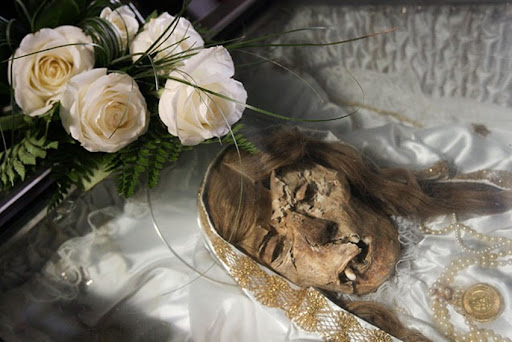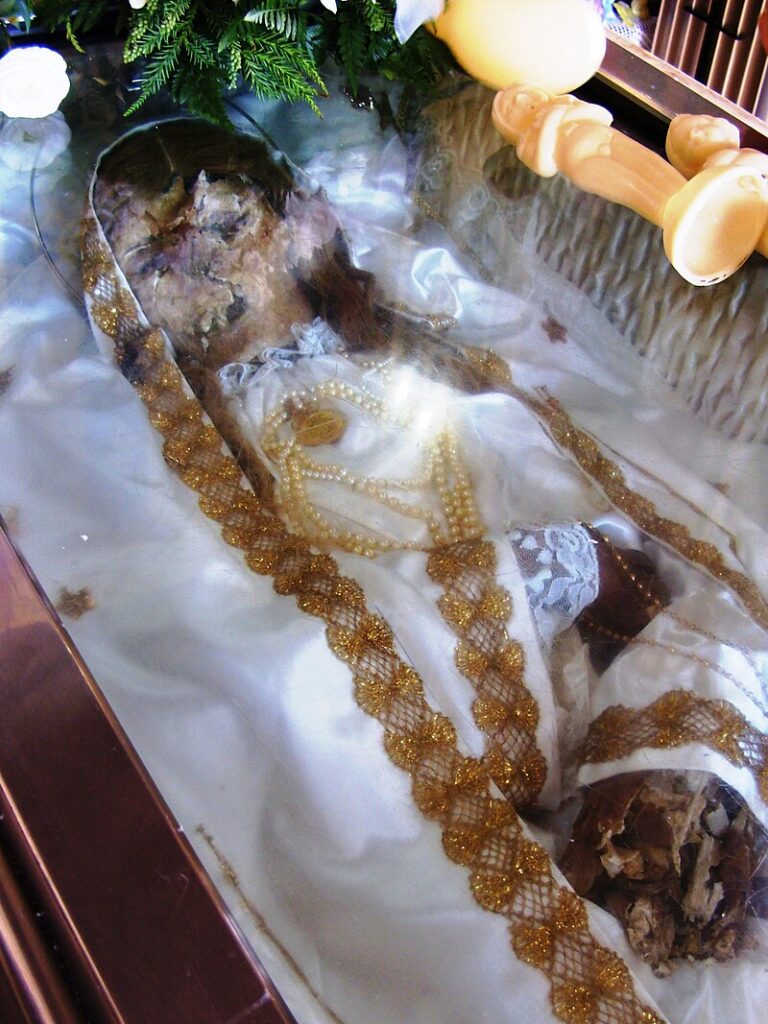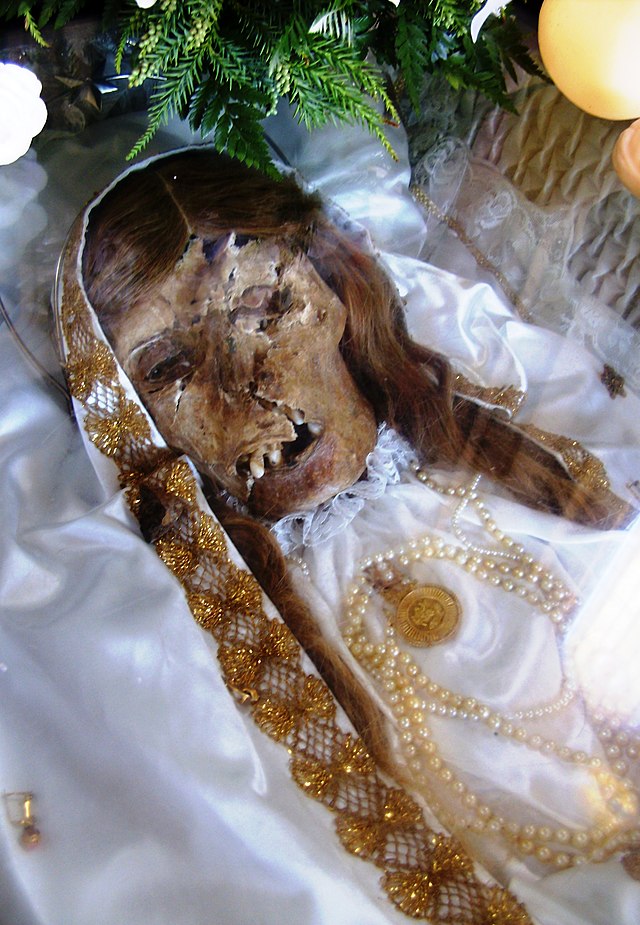Nestled in the picturesque town of Arcozelo, northern Portugal, lies a remarkable destination that has captured the hearts and devotion of countless individuals seeking spiritual solace and divine intervention. This is the resting place of “Santa” Maria Adelaide de Sam José e Sousa, a revered figure whose life and legacy have transcended the boundaries of official recognition, giving rise to one of the largest pilgrimages in the region.
Born in 1835 in the city of Porto, Maria Adelaide’s story is one of selflessness, compassion, and an unwavering faith that left an indelible mark on the community she served. Despite never being officially canonized by the Catholic Church, her unwavering dedication to helping the poor, reconciling estranged families, and spreading kindness has earned her a place of immense veneration in the hearts of the local people.
In this blog post, we will delve into the captivating life and legacy of “Santa” Maria Adelaide, explore the remarkable preservation of her incorrupt body, and uncover the vibrant pilgrimage site that has become a testament to the enduring power of faith and the human desire to seek solace in the divine.
The Life and Legacy of “Santa” Maria Adelaide
Maria Adelaide’s journey began in the city of Porto, where she was born in 1835. As a young woman, she entered the Corpus Christi Convent in Vila Nova de Gaia, where she fell ill. Seeking a change of scenery, she moved to the Largo do Moinho de Vento in Porto, but her condition only worsened. Heeding the advice of her doctor, she traveled to the coastal town of Arcozelo, known for its pine trees and eucalyptus, and it was here that her health began to improve.

In Arcozelo, Maria Adelaide dedicated her life to serving the local community. She made lace and pastries, using the proceeds to assist the poor, providing them with daily bread, sweets, clothes, and catechism. Her love for children was particularly notable, as she showered them with affection and care. She also became known for her ability to reconcile estranged families, using her compassionate nature to bring harmony and peace.
Tragically, the illness that had brought Maria Adelaide to Arcozelo ultimately claimed her life on September 4, 1885. However, her legacy of kindness and devotion did not end there. In the years that followed, her story would take on a remarkable and mystical turn, captivating the hearts and minds of the local people.
The Incorrupt Body and Public Veneration
In 1916, the grave where Maria Adelaide was buried was exhumed, as the plot had been sold. To the astonishment of those present, her body was found to be completely intact, with her clothes still covering her. The body was then covered in stone carbonate and sprinkled with nitric acid, before being reburied in a common grave near the ossuary.

News of the miraculous discovery quickly spread through Arcozelo and the surrounding parishes. On February 25th, a “great cry” was heard, urging the people to go and help exhume the “little saint.” Two local women, Tia Joaquina Rainha and Tia Rosa Caleira, even jumped over the cemetery wall to uncover the grave and retrieve Maria Adelaide’s body, which remained incorrupt.
The body was then washed, dressed in new clothes, and placed in a casket for public display. Over the years, as the body was moved to a new chapel, it remained incorrupt, with a strong scent of roses emanating from it. This remarkable preservation of the body, coupled with Maria Adelaide’s reputation for kindness and compassion, cemented her status as a revered, though unrecognized, saint in the eyes of the local people.
The Shrine and Museum
The site of Maria Adelaide’s final resting place has become a pilgrimage destination for people from all over the region, and even beyond. A shrine has been built to house her remains, with a marble tomb covered in glass, allowing visitors to gaze upon her deformed but still-intact body.
Alongside the chapel, the “House of Miracles” stands as a testament to the countless individuals who have sought the “little saint’s” intercession. This museum-like structure displays an array of offerings and expressions of gratitude, including wedding dresses, baptismal and communion outfits, coins and banknotes from around the world, handicrafts, ceramics, jewelry, and even prostheses and cut hair.
The sheer volume and diversity of these offerings speak to the profound impact that Maria Adelaide has had on the lives of her devotees. Despite the lack of official recognition by the Catholic Church, the veneration of “Santa” Maria Adelaide continues to thrive, drawing in pilgrims who seek her graces and protection.
Conclusion
The story of “Santa” Maria Adelaide and the pilgrimage site in Arcozelo is a remarkable testament to the enduring power of faith and the human desire to find solace in the divine. Though she may not have been officially canonized, Maria Adelaide’s legacy of kindness, compassion, and unwavering devotion has captivated the hearts and minds of countless individuals, who continue to flock to her shrine in search of spiritual guidance and divine intervention.
The preservation of her incorrupt body, the vibrant shrine and museum, and the countless offerings left by grateful devotees all serve as a testament to the profound impact that this unrecognized saint has had on the people of northern Portugal. As we explore this unique and captivating pilgrimage site, we are reminded of the profound ways in which faith and belief can transcend the boundaries of official recognition, and how the human spirit can find solace in the most unexpected of places.


